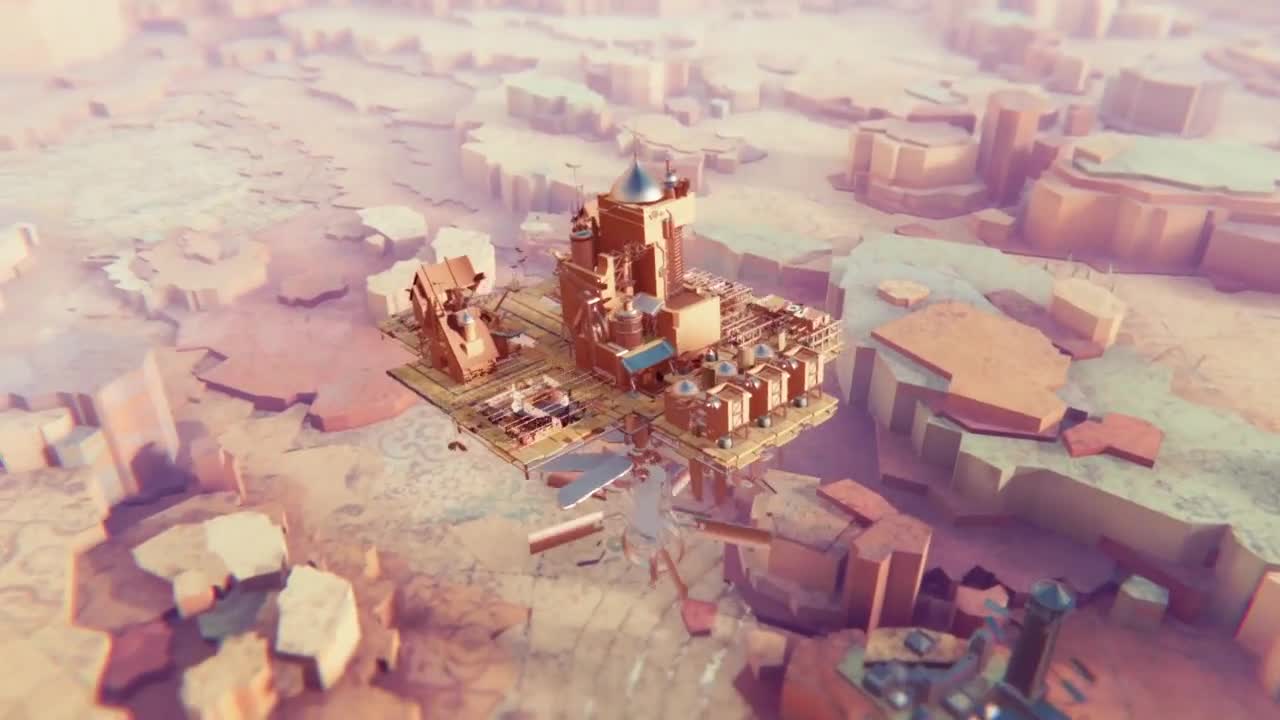

The map, which spans out below the player as far as the eye can see, is more simplistic - favouring clarity and draw distance over detail. The more elaborate style is used mainly on the HUD and menu screens, as well as when representing the airborne city itself - which is made up of gilt-edged metal work and ornate domes.

Once in the game itself, players are met with beautiful, stylised visuals which include aspects of both the very ornate, Middle-Eastern style that I spoke of earlier, along with a chunky, pixel art aesthetic. These requirements might manifest as fetch quests in practice, but draping them in an elaborate, gold-leaf storyline really helps get the player bought in. This, in itself, is fairly unique, and the player will soon be tasked with meeting the requirements of various cities both large and small in order to bring them closer to unity.

Upon booting Airborne Kingdom the player is treated to a glorious, hand drawn animation that speaks of a prophecy - one in which a floating city would bring peace to the lands. A serene city-builder with a unique visual style and an engaging unusual overall story, what starts as an interesting novelty soon grows into a compelling addiction. Drawing inspiration from Middle-Eastern stories such as Aladdin and adding an almost Steampunk-like element to them might sound like a crazy idea, but that is exactly what makes Airborne Kingdom an interesting and unusual prospect.


 0 kommentar(er)
0 kommentar(er)
